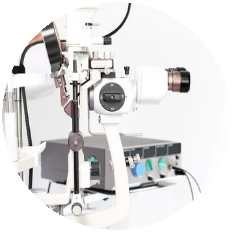Dry Eye Syndrome
Causes and Symptoms
What is Dry Eye Syndrome?
Dry Eye Syndrome is an unpleasant condition in which a lack of tears or poor tear quality leaves the eyes chronically dry, which can make them uncomfortable or painful and even affect vision.
What are the symptoms of Dry Eye Syndrome?
Dry eye symptoms are often described as a ‘gritty’ or a feeling of a foreign body being present in the eye, but can also include redness, burning and itching. Sometimes there is excessive watering of the eyes and vision can also become blurred as a poor tear film affects the way light enters the eye.
What causes Dry Eye Syndrome?
There are several different factors that can cause or contribute to dry eye syndrome.
A small proportion of people have dry eyes related to decreased tear production. This is the case in those who suffer from Sjogren’s Disease – an autoimmune condition which causes decreased tears and saliva. Pilocarpine oral medication can stimulate tear production, but may cause excessive sweating. To date, there have been no other treatments which can increase production, and symptoms are managed by using artificial tears. This has, however, now changed with the introduction to the market of the Rexon-Eye device from Resono Ophthalmic SRL, which successfully treats hyposecretive and evaporative dry eye.

90% of dry eye cases are related to meibomian gland dysfunction (MGD) which causes problems with the oil layer of the tear film on the eye. Insufficient or poor quality oils expressed by the meibomian glands in the eyelids causes tears to evaporate quickly, leaving the eye dry.
There are multiple treatment options aimed at improving oil secretion and quality to alleviate symptoms.
IPL can reduce abnormal blood vessels and is able to stimulate the cells through a process called photobiomodulation. IPL can also reduce demodex. LipiFlow is very effective in evacuating the meibomian glands of poor quality oils, allowing the glands to produce better quality oil.







